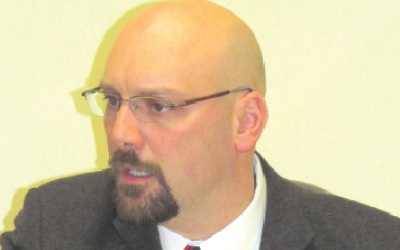
The five apartment buildings that have been proposed or approved to go up in Mineola could bring up to 105 new students into the Mineola school district, according to a study released earlier this month.
The district commissioned the study over the summer from Babylon-based Educational Legacy Planning Group to outline its overall student population outlook over the next 10 years in addition to examining the apartment projects’ potential impact.
Using district, state and federal statistics, it projects the two developments finished so far — Modera Mineola at 140 Old Country Road and Mineola Properties at 250 Old Country Road — will bring about 50 new students over the next five years.
A total of about 100 children will live in those two buildings, but about half of them will move out before they enter public schools, Robert Hendriks of the Educational Legacy Planning Group said at the Mineola school board’s Nov. 5 meeting.
The estimate is roughly on par with the 52 students developers thought the buildings would bring when they proposed them.
Mill Creek Residential Trust estimated Modera would produce 11 school-age children, and New Hyde Park-based Lalezarian Developers has said the building at 250 Old Country Road would produce 41.
The children in the apartments could put more kids into the Mineola district’s pre-school programs, which Superintendent Michael Nagler said he sees as an opportunity to get those families to stay in the district even if they move out of the new apartment buildings.
“If they stay long enough to go into pre-K, then they get to experience us and we get to experience them, so we get them,” Nagler said at the Nov. 5 meeting. “And then the trick becomes, they can’t leave, so the notion of marketing to them or selling to them or making sure we are the choice when they move out.”
The estimates for Lalezarian’s Village Green at 199 Second St., which the village board approved in May and got a tax break package from the county Industrial Development Agency Nov. 9, were more divergent.
Amidst concerns about an influx of students, a developer-commissioned study estimated the 266-unit building would only bring eight school-age children.
But the school district’s study estimates it will produce 25 over the first five years it’s functional.
Mill Creek’s proposed pair of buildings at the site of the former Corpus Christi Elementary School, now before the Mineola village board, would bring 15 new students into the district, the study found.
That’s lower than the developer’s more cautious estimate of 23, which an engineer calculated using a standard formula for housing.
But it’s more than twice the estimate of six students, developed using a special formula for the “transit-oriented” buildings going up in Mineola.
A fifth project called The Bridge that the Mineola village board has previously proposed and rejected could add another 15 students to the district, the study found.
The study found the district’s population will decline slightly over the next 10 years, with groups of adults ages 25-39 and children ages 4-9 moving in and replacing the many younger adults ages 18-24 and people over age 70 who account for most of the Mineola district’s “out-migration.”
Without the housing developments, Hendriks said Nov. 5, in 10 years there would be 1,000 fewer people living in the district, which touches Mineola, Albertson, Williston Park, Garden City Park and Roslyn Heights. He said the district should try to “corral” their younger residents to stay in Mineola as they age and start families.
“These housing projects are actually helping to keep you healthy as a community and helping to keep your population steady,” he said.
The study also found overall school enrollment will remain fairly steady, which Nagler said is good given the fact that many other districts are seeing a drop in enrollment.
Because there are currently large classes in the district’s elementary and middle schools, middle school and high school enrollment will increase over the next 10 years.
The three elementary schools, on the other hand, will see short-term growth, but enrollment will eventually return to its current level or decrease.






